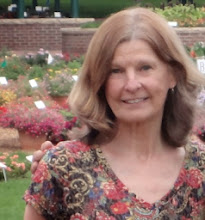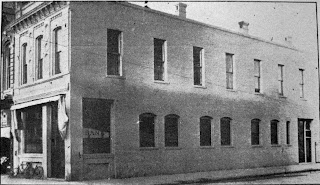When Orlan D. Keen built this building about 1935 it had just one address, #15, and one front door and seemed to be intended to be "automotive." A huge door at the back could have admitted any vehicle. Its first inhabitants according to the Walla Walla City Directory were Battery and Electric Service Company, who moved there in 1935. They were an "official Willard Service Station" and specialized in "Magnetos, Gas and Oil, Auto and Radio Repairing, All Makes of Battery and Ignition." Battery and Electric Service occupied the Keen Building until after the war, when Hunt and Lindstrom's General Auto Repair moved in.
Even though it's no longer there, I'd like to talk about the O. D. Keen Building's neighbor next door, the former #19. This was the Keen Apartments and seems to have been built even earlier, probably 1930. The five units of the Keen Apartments were there from 1931 until 1964, and with automotive businesses next door it could never have been a peaceful place to live. I asked around to find out if anyone could remember the Keen Apartments. Doug Saturno confirmed that the apartments were indeed a separate structure from the O. D. Keen Building and remembered they were brick. The only remaining physical evidence we have of the Keen Apartments is four tiny windows cut into the Mill Creek embankment that looked out to the creek from the building's basement. Tenants of the Keen Apartments were mostly widows and single gentlemen, with an occasional couple. Zoning at the time must have allowed businesses as well as residences. A messenger service called 55 (their business name was also their phone number in the days when 2 digits was all you needed) was operated from the Keen Apartments and owned by a Mr. George Elkinton. He offered delivery service in "modern trucks and vans" and could do household moving and retail store delivery. In the 1960s "Hank" and "Kelly" each had barber shops in unit #1. After 30 years, and a name change to Millbrooke Apartments, the building's listing disappeared from the city directory along with its tenants.
When the apartment building was razed I can't be sure, but by 1965 #19 Spokane was no more. I resigned myself to never knowing what the Keen Apartments looked like until Joe Drazan found me a 1931 photo taken during the serious flood that occurred that year. The apartment building was right next to Mill Creek, and the photo shows water gushing over the bridge and, in the background, one can see the long narrow brick Keen Apartments. Due to a disaster, a building that might not have ordinarily been photographed was captured for history.
When the apartment building was razed I can't be sure, but by 1965 #19 Spokane was no more. I resigned myself to never knowing what the Keen Apartments looked like until Joe Drazan found me a 1931 photo taken during the serious flood that occurred that year. The apartment building was right next to Mill Creek, and the photo shows water gushing over the bridge and, in the background, one can see the long narrow brick Keen Apartments. Due to a disaster, a building that might not have ordinarily been photographed was captured for history.
By 1964 the Keen Apartments were gone. Next door Hunt and Lindstrom left the O. D. Keen Building in 1968. For the next 32 years the O. D. Keen was relegated to mere storage space. It was used until 2000 as a convenient warehouse for Naimy's Furniture, whose retail store was on the corner of Spokane and Main. Good things happened when Steve Rapp of Allegro Cyclery bought the O. D. Keen Building in 2000. Steve described it as pretty much a "shell" at that time, but with the help of RTL Construction, he restored the building's original features and gave it some pleasant new additions. The building was divided into two spaces; the two shop windows were installed, as were the entry doors. The massive garage door at the back had been boarded up for years and was a wonderful surprise when it was uncovered. The understated but charming geometric designs on the front were restored and highlighted. O. D. Keen's name in relief at the top of the building was painted so that a passerby could easily make out the man who built it. His apartments next door are gone but we still have the O. D. Keen Building, and it is looking better than ever.
Thanks, Joe Drazan for the 1931 photo of the Keen Apartments.
Thanks, Joe Drazan for the 1931 photo of the Keen Apartments.




















